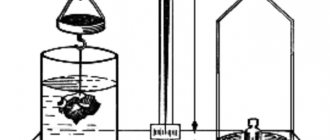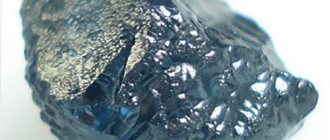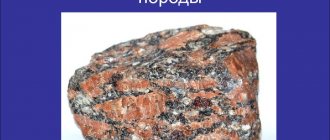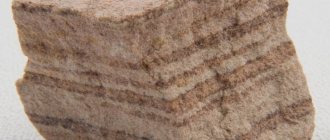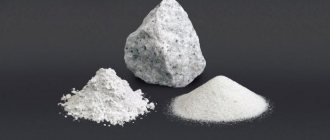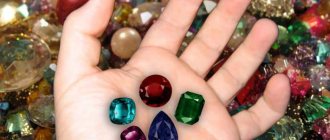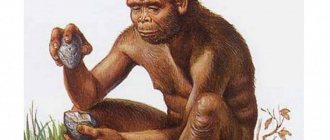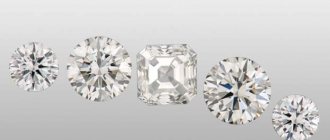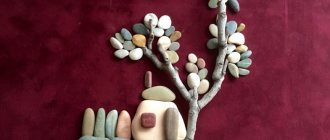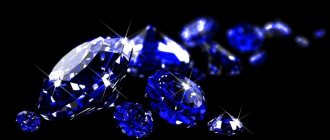Taaffeit
Taaffeite is a rare mineral of the oxide class. Opened in 1945 by Earl Richard Taaffe in Dublin. In the batch of precious stones, he noticed one that was significantly different from the others. It was initially mistaken for an unusual spinel.
A detailed analysis of the stone by members of the mineralogical department of the British Museum showed that the sample belongs to a previously unknown mineral. Using X-rays and chemical analysis, it was determined that the stone's composition was intermediate between spinel and chrysoberyl.
Taaffeite has a hardness of 8 out of 10 on the Mohs scale. This means that it can only be scratched by harder stones - corundum (score 9) and diamond (score 10). The color of the stone varies from colorless and greenish to pinkish.
It is found in two deposits in China, as well as in Sri Lanka. One carat of taaffeite (0.2 g) costs about $35 thousand. Although formally taaffeite is a semi-precious stone, its rarity (1 in a million diamonds) makes it possible to equate it to precious stones.
Bedrock deposits
Such formations of gold appeared as a result of the movement of magma during a period of volcanic activity. Magma contains much more of this metal than the earth's crust.
Magma, escaping from the depths, gradually solidified, as a result of which minerals were formed. If the elements had increased refractoriness, they crystallized, and low-melting substances moved on. But not only gold has a low melting threshold; there were also other elements, the combination of which formed a chemical complex of substances. Therefore, in the area of primary deposits it is difficult to find gold in its pure form. Typically, compounds where there are gold inclusions consist of a combination of iron, copper, lead and zinc.
Because As a result of volcanic activity, mountains were formed, then gold must be looked for in mountainous gold-bearing areas.
Serendibit
Serendibite is a rare mineral from the sapphirine supergroup. Opened in 1902 in Sri Lanka.
The mineral contains calcium, boron, aluminum, magnesium and other elements. Serendibite crystals have a wide range of shades. Some stones have a very rich color, making them appear black. Blue and dark blue samples are also known.
In addition to Sri Lanka, the stone is found in Burma, Myanmar, Tanzania and Madagascar. Over more than a century of searching for it, no more than 1,500 stones have been recovered. The rarity of serendibite has raised the cost of one carat to $18 thousand.
How to choose the right stone
Considering the above stones, it will be quite difficult to choose a suitable gem. But what rules should you follow when choosing jewelry with such bold minerals:
- Choose the color of the mineral based on your character. You should not choose jewelry with red gemstones if you are a melancholic and phlegmatic person. Such stones can simply crush your character.
- Choose jewelry according to your budget. You should not chase expensive rubies if your budget is limited. You can calmly coexist, for example, with a pomegranate and be happy with your purchase.
- Read different sources of information and decide which stone is right for you energetically. Then you can find a balance and get only good things from your jewelry.
5/5 — (1 vote)
Alexandrite
Alexandrite is a natural variety of the mineral chrysoberyl with an admixture of chromium. Discovered in 1834 by academician Nils Nordenskiöld. Unable to examine the unusual green stone in the field, he took it home. By candlelight, the stone turned red. The unusual mineral was named in honor of the future Emperor Alexander II.
Alexandrite: Wikipedia
The mineral differs from chrysoberyls in color properties. The main feature of the stone is pleochroism, the ability to change color when viewed from different angles. In natural light, alexandrite crystals have shades of green or blue, and in electric light, the stone changes color to crimson, violet or purple.
This is due to the characteristics of the alexandrite crystal lattice. Some stones have a "cat's eye" effect: they take on an iridescent glow in certain lighting conditions. Alexandrite is found in Russia, Sri Lanka and Brazil. The cost of alexandrite can reach $12 thousand per carat.
DIRECTORY OF MINERALS AND ROCKS ENCYCLOPEDIA OF STONES
minerals, rocks, precious, semi-precious and ornamental stones, semi-precious stones, artificial stones and imitation natural stones in a single dictionary - reference book
A B C D E F G H I J K L M N O P R S T U V
ABELSONITE (abelsonite) – mineral (nickel porphyrin) NiC32N4H36, forms small flaky pink crystals. ABERNATHYITE is a mineral with the composition K2[UO2AsO4]2•3H2O. ABESSEDITE is an igneous rock, a type of peridotite, composed of olivine, hornblende and phlogopite. The name comes from the Abessedo mine, Portugal. An obsolete local term. ABYSSAL Tholeiite is an igneous rock, a type of tholeiitic basalt with K2O < 0.4%. Found on the ocean floor. Aka mid-ocean ridge basalt. ABIKHITE is an outdated name for clinoclase. ABLYKITE is a clayey “mineral” similar in X-ray data to halloysite. The name is given after the Ablyk deposit in Uzbekistan. ABRAZITE is the same as gismondite, an outdated term. ABRIACHANITE – iron-containing glaucophane, an obsolete term. ABSIT – thorium-containing brannerite, an obsolete term. ABUCUMALITE is the same as ytrobritholite, an obsolete term. ABKHAZITE is a type of tremolite, an outdated term. AVAIT – platinum iridium, an outdated term. AVALITE – chromium illite, an obsolete term. Avalite was discredited as a mineral name by the IMA in 1998. AVANTURINE - same as aventurine, an obsolete term. AVANTURINE - quartzite, including evenly scattered small flakes of mica, hematite or hair-like crystals of rutile. AVENTURINE QUARTZ - the same as aventurine. AWARUITE - a mineral, a type of native iron - a natural alloy of iron and nickel, Ni3Fe. AUGITE is a mineral of the monoclinic pyroxene group, Ca(Mg,Fe,Ti,Al)[(Si, Al)2O6]. AUGITE BASALTIC – “mineral”, an intermediate member of the isomorphic series of pyroxenes, an obsolete term. AUGITE-BRONZITE is an outdated name for hypersthene. AUGITE FOLIOUS – the same as diallag, a redundant term. AVENTURINE – same as aventurine, an obsolete term. AUGITE ORDINARY - the same as augite. TITANIUM AUGITE – the same as titanium-augite or augite containing 3-5% TiO2. AUGUSTITE is an obsolete name for apatite. AVELINOITE – the same as tsirilovite, a redundant term. AVICENNITE - mineral, thallium oxide Tl2O3, typical admixture of ferric iron up to 4.5%. AVOGADRITE is a mineral of the halide class, KBF4. AUSTRALIAN EMERALD – light green beryl. AUSTRALIAN SAPPHIRE is a greenish sapphire from Australian mines, and is also a trade name for synthetic dark blue sapphire. AUTOMOLIT – the same as autolyte. AGALITE is a pseudomorph of talc after enstatite. AGALMATOLITE is a cryptocrystalline aggregate of pyrophyllite. AGAPITE – glassy Iranian turquoise. AGARDITES – minerals: agardite-(Ce), agardite-(Ce) Cu2+6Ce(AsO4)3(OH)6•3H2O; agardite-(La), agardite-(La) Cu2+6La(AsO4)3(OH)6•3H2O; agardite -(Nd), agardite-(Nd) Cu2+6Nd(AsO4)3(OH)6•3H2O; agardite-(Y), agardite-(Y) Cu2+6Y(AsO4)3(OH)6•3H2O; form needle-like aggregates. AGATE is a type of layered chalcedony. AMETHYST AGATE – an agate with a cavity filled with amethyst crystals. APERTURE AGATE – agate with natural internal cavities. BASTION AGATE – agate in which the layers form a pattern reminiscent of the image of bastions. AGATE BOTHROIDAL - an agate shaped like a bunch of grapes, consisting of small stuck together spheres. BRECCIA AGATE - an agate consisting of cemented fragments of agate with sharp edges. BRECCIATED AGATE – brecciated agate. AGATE WATER – enhydros. Pseudoscientific term. ORIENTAL AGATE is an old trade name for high quality agate. EYE AGATE is a variety of agate with a pattern resembling an eye. Ocellated AGATE – the same as ocellated agate. BLUE AGATE – chalcedony or blue agate. WOODY AGATE – wood replaced by agate during the process of silicification, petrified wood. WOODEN AGATE – the same as woody agate. DENDRITIC AGATE – agate with dendritic inclusions of manganese and iron oxides. DISC AGATE – chalcedony with round inclusions of iron oxide. GEODE AGATE - tonsils in effusives or concretions in sedimentary rocks, filled with chalcedony, sometimes hollow inside. WESTERN AGATE is an old trade name for low quality agate. STAR AGATE – star-shaped agate, chalcedony with the inclusion of star-shaped intergrowths of various foreign minerals. INDIAN AGATE – the same as moss agate. IRISTING AGATE – the same as rainbow agate. ICELAND AGATE is the trade name for obsidian. CARNEOLIAN AGATE is an agate with a predominance of red, orange and brown colors. CLASTIC AGATE – the same as brecciated agate. CORAL AGATE – agate pseudomorph of coral or agate with a pattern resembling a twig. FORTRESS AGATE – agate whose concentric banding is complicated by protruding corners and/or ledges. LAVENDER AGATE – agate of lilac-violet color. LANDSCAPE AGATE – the same as landscape agate. MOSAIC AGATE – multi-color brecciated agate with a mosaic pattern. MOSS AGATE is a type of dendritic agate with inclusions resembling moss or fern leaves. CLOUD AGATE – agate whose pattern resembles clouds. OOLITE AGATE - agate with small round inclusions consisting of small cemented grains of calcite, reminiscent of oolites. ISLAND AGATE is the trade name for obsidian. OPAL AGATE is the trade name for agate with layers of amorphous opal. spectacled AGATE – agate with a dark central circle, having a concentric-zonal structure. LANDSCAPE AGATE – agate with a textured pattern reminiscent of a landscape. PINATE AGATE – agate with a pattern reminiscent of ostrich feathers. MOTHER-OF-PEARL AGATE – agate with a mother-of-pearl sheen. FLAME-FORMED AGATE – the same as flaming agate. FLAME AGATE – agate with flame-like areas of red shades. PLINTOID AGATE – agate with zones divided into “bricks”. STRIPED AGATE – chalcedony onyx or agate with a parallel-layered structure. PURPLE AGATE is the trade name for amethyst with a purplish-red color. RAINBOW AGATE – agate that has rainbow colors in transmitted light. SHELLY AGATE - agate with a pattern reminiscent of the patterns on mollusk shells. AGATE RUINS - agate with a pattern reminiscent of the ruins of a castle. SAGENITE AGATE – agate with fine-needle foreign inclusions. SAPPHIRE AGATE – agate of bluish-sapphire color. SILVER AGATE is the trade name for jasper. CARNELIAN AGATE – agate of orange or orange-red color. CANCOT AGATE is the trade name for chalcedony jasper-like rock. GLASS AGATE is the trade name for Vesuvian or obsidian. SPHERICAL AGATE – the same as serf agate. DOTTED AGATE – agate with a pattern in the form of dots. TUBULAR AGATE – agate or chalcedony trumpet-shaped, sometimes branching tonsils. TUBULAR AGATE – agate with foreign tubular inclusions. PORCELAIN AGATE is the trade name for an opaque whitish opal. FORTIFICATION AGATE – the same as fortress agate. FLORAL AGATE – agate with a pattern reminiscent of flowers. AGATE STONE – the same as agate. AGATOCOPALITE is a modern resin. AGAFIT – same as agapit, an outdated term. AGUILARITE (aguilarite) is a mineral, silver sulfoselenide from the acanthite group, Ag4SeS. AGLAITE – same as cymatolite, an obsolete term. AGLAURITE is the trade name for adularia (moonstone) or orthoclase with blue iridescence. AGNESITE is the trade name for steatite. AGNOLITE - the same as inesit, an outdated term. AGOLITE – agalmatolite. AGRELLITE is a mineral from the lithidionite group, silicate, NaCa2Si4O10F. AGRICOLAITE (agricolaite) – mineral, potassium uranyl carbonate, K4(UO2)(CO3)3. Not to be confused with agricolite. AGRICOLITE is a misnomer for the mineral eulytine. Not to be confused with the mineral agricolaite. AGRINIERITE (agrinierite) – mineral, K2Ca[(UO2)3O3(OH)2]2•5H2O. AGTSTEIN - the same as amber, an outdated name. AGSTEIN - same as jet, an obsolete term. ADAMANT – diamond, an outdated term. ADAMAS - from antiquity until the end of the 14th century, this term denoted diamond, colorless corundum, a light crystal of magnetite or a very hard metal. ADAMINE (adamite) – mineral, zinc arsenate with hydroxyl, Zn2AsO4(OH). COBALT ADAMINE is a cobalt-containing variety of adamine. ADAMINE COPPER is a copper-containing variety of adamine. ADAMITE – the same as adamin. ADAMSITE is a type of muscovite. ADELAIDE-RUBY - the same as Adelaide-ruby. ADELAIDE RUBY is a trade name for almandine or red pyrope, and is also a variety of topaz. ADELAIDE RUBY – Adelaide ruby. ADELPHOLITE – same as samarskite, an obsolete term. ADIPITE - same as chabazite, an obsolete term. ADIPOCERITE – modified pyrochlore, an obsolete term. ADMONTITE is a mineral, MgB6O10•7H2O, named after the Admont deposit in Austria. ADULAR – the same as moonstone, trade name. ADULAR is a colorless, low-temperature, translucent to transparent variety of orthoclase. ADULAR BARIUM – barium-containing variety of adularia. ADULARIUM is an obsolete name for moonstone (adularia). ADULAR MOONSTONE - a type of adularia with the effect of moonstone - a characteristic glow from white to blue. ADYGEITE is a rare variety of dense fibrous serpentine. AZABASH is the old Spanish name for jet. AZOPROITE (azoproite) is a mineral, borate from the ludwigite group, Mg2+[(Ti,Mg),Fe3+]O2BO3. AZORITE – same as zircon, an obsolete term. AZURITE (azurite) – a mineral of dark blue and light blue color, hydrous copper carbonate, Cu3(CO3)2(OH)2. AZURITE-LAPIS is a dense mineral aggregate consisting of quartz (~60%) and azurite (~40%). AZURITE LEAD – same as linarite, an obsolete term. AZURLITE - pale blue chalcedony, also chrysocolla, an obsolete term. AZUR-MALACHITE is a stone consisting of mutual germinations of azurite and malachite. AIDYRLIT is a mixture of opal, hydroargillite and Ni(OH)O2. AYKAIT is a fossil resin similar to amber. AIKINITE (aikinite) – mineral, sulfobismuthite of copper and lead, CuPbBiS3. AYTHALITE - presumably a mixture of cassiterite and tapiolite or tantalum-containing cassiterite, an obsolete term. IOWAITE – mineral, Mg6Fe3+2(OH)16Cl2•4H2O. AYTALIT is the same as asbolan. AKABAR - Akkarbar. AKAGANEITE is an unstable modification of goethite. AKADIALITE is a meat-red variety of chabazite. AKANTIKON – the same as epidote, an obsolete name. AKANTIKONITE - the same as epidote, an obsolete name. ACANTHITE (acanthite) – mineral, silver sulfide, low-temperature modification of argentite, Ag2S. AKATOREITE – mineral, Mn2+9Al2Si8O24(OH)8. AQUAJEM – blue synthetic spinel. AQUACREPTITE is an insufficiently studied “mineral” close to kaolinite or montmorillonite. AQUALITE is the trade name for pale synthetic indigolite. AQUAMARINE is a greenish-blue variety of beryl. AQUAMARINE BOHEMIAN – blue topaz. AQUAMARINE ORIENTAL - sea green corundum, pale sapphire or trade name for green and blue varieties of topaz. AQUAMARINE SIAMESE is the trade name for blue fired (heat-treated) zircon, as well as green spinel. AQUAMARINE-PERIDOT is the trade name for yellow beryl. AKDALAITE (akdalaite) – mineral, (Al2O3)5>•H2O. AKERIT – blue spinel, local geographical name. AKIARDITE – the same as dakiardite. AKINT – the same as yakhont, an outdated name. AKINF - the same as Yakhont, an outdated name. AKKABAR – Akkarbar. AKKARBAR is a type of black coral. ACMIT-AUGITE is a golden-yellow clinopyroxene, intermediate in composition between augite and aegirine. AKONTIT is an obsolete name for glaucodotus. AKORI is a blue colored variety of horn coral. AKORITE – akerite (blue spinel). AKROCHORDITE (akrochordite) is a rare mineral, Mn2+5(AsO4)2(OH)4•4H2O. AKRUZITE – the same as cerussite, an outdated name. AKSAITE is a mineral of the borate class, MgB6O7(OH)6•2H2O. Named after the Aksai field in Kazakhstan. AXINITES – borosilicate minerals: axinite-(Fe), axinite-(Fe), until 2008 ferroaxinite, Ca4(Fe2+)2Al4[B2Si8O30](OH)2; axinite-(Mg), axinite-(Mg), until 2008 magnesioaxinite, Ca4Mg2Al4[B2Si8O30](OH)2; axinite-(Mn), axinite-(Mn), until 2008 manganaxinite, Ca4(Mn2+)2Al4[B2Si8O30](OH)2. AXINITE IRONUS is an iron-containing variety of “axinite”. A solid solution classified according to the 1998 IMA nomenclature as the mineral ferroaxinite. In 2008, ferroaxinite was renamed axinite-(Fe). AKTASHITE (aktashite) – mineral, Cu6Hg3As4S12. Named after the Aktash deposit in Altai. ACTINOLITE (actinolite) is a mineral of the calcium group of the amphibole supergroup, Ca2(Mg,Fe2+)5Si8O22(OH)2. ACTINOLITE-ASBESTOS – the same as amianth. MANGANESE ACTINOLITE is a type of actinolite containing up to 6% MnO. AKUNT – the same as yakhont, an outdated name. ALABANDINE (alabandite) is a rare mineral, manganese sulfide, MnS. ALABANDINE-RUBY is the trade name of almandine. ALABANDER GARNET is the same as almandine, a trade term. ALABANDINE IRONUS - the same as ferroalabandine, the ferrous variety of alabandine. ALABASTER is an obsolete name for alabaster. ALABASTER is an obsolete name for alabaster. ALAZANITE is discredited by the IMA as a mineral of composition FeS1,2. According to X-ray data, it was almost no different from marcasite. Discovered in Georgia, described in a 1973 article. It was stated as a product of the alteration of pyrrhotite, with a composition intermediate between pyrrhotite and pyrite. ALAIT is a “mineral” with the composition V2O5•H2. ALALITE - discredited by the IMA as the name of the mineral of the composition MgCaSi2O6. ALAMANDINE – the same as almandine. ALAMANDITE – synthetic spinel. ALAMOSITE (alamosite) – mineral, lead silicate, PbSiO3. ALANÇON DIAMOND is the trade name for smoky quartz (rauchtopaz) mined in France. ALAUNSPAT – same as alunite, an obsolete term. ALAUNSTEIN - also known as leuvigite or lovigite, the same as alunite, an outdated term. ALBANITE is a hydrocarbon or a mixture of cyclic hydrocarbon compounds. ALDANITE is a lead-containing variety of the mineral thorianite (ThO2), named after the place of discovery (Aldan, Yakutia); outdated term. ALABASTER is a marble-like, dense, fine-grained aggregate of white gypsum. ORIENTAL ALABASTER is the trade name for marble onyx. EGYPTIAN ALABASTER is an outdated name for dense sinter calcite. ALEXANDRITE is a jewelry variety of chrysoberyl. Also called synthetic spinel and corundum with an alexandrite effect (different colors in natural and artificial light). ALEXANDRITE BLUE is the trade name for sapphire with the alexandrite effect. ALEXANDRITE SIBERIAN - alexandrite from the Ural deposits with a pronounced color change, an outdated local geographical name. ALEXANDRITE CAT'S EYE - alexandrite with a cat's eye effect. ALEXANDROLITE is a chromium-containing variety of the mineral halloysite-10Å (halloysite-10Å, Al2Si2O5(OH)4•2H2O) [one version]. ALEXEEVIT is a hydrocarbon compound or mixture of cyclic hydrocarbons. ALEXITE (aleksite) – mineral, PbBi2Te2S2. ALECTORIUS - in ancient times, a magic stone that was considered a strong talisman that provided the owner with strength, courage and wealth. It is also called rooster stone - it was found in the stomachs of roosters in the form of a crystal the size of a pea. Apparently, this is one of the varieties of bezoar. ALENKON DIAMOND is a trade name for rock crystal. ALEPPO STONE is the same as eye agate. ALGERITE is a product of decomposition of scapolite group minerals, an obsolete term. ALIZONITE is a mixture of chalcopyrite and galena, an obsolete term. ALIPITE - same as rhottisite, an obsolete name. ALLANITES – a group of minerals of the epidote supergroup: allanite- (Ce), allanite-(Ce), CaCeAl2Fe2+(Si2O7)(SiO4)O(OH); allanite- (La), allanite-(La), CaLaAl2Fe2+(Si2O7)(SiO4)O(OH); allanite-(Nd), allanite-(Nd), CaNdAl2Fe2+(Si2O7)(SiO4)O(OH); allanite-(Y), allanite-(Y), CaYAl2Fe2+(Si2O7)(SiO4)O(OH). ALLENGITE is a fossil resin similar to amber. ALLEPP AGATE – the same as eye agate. ALLOMIT – alomit. ALLOHIT – epidote. ALLOCHROITE is the old name for the red-brown andradite garnet. DIAMOND is a mineral, one of the crystalline forms of native carbon along with graphite, lonsdaleite and chaoite. The hardest known natural substance. Has the highest thermal conductivity (at room temperature). Precious stone. ALPINE DIAMOND is the trade name for pyrite. BUXTON DIAMOND is a trade name for rock crystal. BAFF DIAMOND is a trade name for rock crystal. BOHEMIAN DIAMOND is an old geographical name for rock crystal. BORNHOLM DIAMOND is a trade name for rock crystal. BRAZILIAN DIAMOND is an old geographical name for rock crystal. BRIGHTON DIAMOND is a trade name for rock crystal. DIAMOND VOSTOCHNIY is the trade name for corundum-leucosapphire. HAWAIIAN DIAMOND is the trade name for rock crystal. HORATIA DIAMOND is the ancient name for rock crystal. DAUPHINE DIAMOND is the trade name for rock crystal. DIAMOND WESTERN is the trade name for rock crystal. IRISH DIAMOND is a trade name for rock crystal. FALSE DIAMOND – the same as rock crystal, a trade term. NEVADA DIAMOND is the trade name for obsidian. GERMAN DIAMOND is the trade name for rock crystal. ISLE OF WHITE DIAMOND is a trade name for rock crystal. PAFA DIAMOND – trade rock crystal. PECOS DIAMOND is the trade name for rock crystal. RADIUM DIAMOND is the trade name for smoky quartz (rauchtopaz). RAINBOW DIAMOND is the trade name of synthetic rutile with a bright play of colors. RHINE DIAMOND is a trade name for rock crystal. SAXON DIAMOND is the trade name for topaz. SIBERIAN DIAMOND is a topaz and also a trade name for rock crystal. The Tasmansky diamond is the commercial name of the rock crystal. Trenton diamond - the commercial name of rock crystal. Weshirsky diamond - the trade name of rock crystal, topaz or phenakitis. The Ural diamond is the same as a demantoid, a trade term. Flinder diamond is white topaz. Herkimersky diamond - the commercial name of rock crystal. Diamond Ceylon - the commercial name of the transparent colorless zircon. Black diamond - the trade name of hematite. The Shaumburgsky diamond is the trade name for rock crystal. Stalberg - Almaz Stolberg. Diamond Stolberg - the commercial name of rock crystal. Diamond spar - corundum. Almandin is the same as Almandin. Almashit - fossil amber -like resin. Aolomite is the trade name for blue sodalite. Almashit - Almashit (fossil amber -like resin). Albertite is the trade name of bitumen. Albite Lunar Stone is a type of albit with pronounced opalescence. Alvit is a type of zircon. Algodonite (Algodonite)-mineral, copper arsenate, Cu1-XASX (X ~ 0.15). Almandin -mineral, iron-aluminum grenade. Almandin Vostochny - the commercial name of Corunda. Almandin Rubin - striped spinel. Almandin-shpinel is a spinel of red shades. Almandine spinel is Almandin-Shpinel. Almandine sapphire -red-violet corundure. Almandite is the trade name for red synthetic spinel. Alpine diamond - the trade name of Pirita. Alpino - unique in their red color and characteristic octahedron appearance Swiss fluorites. Alsheditis is the trade name of Titanite. Alumag is a trading name for synthetic spinel. Alaskan diamond - the trade name of rock crystal, as well as hematite. Alaskan black diamond - the trade name of hematite. Amazonite is a variety of green microclines. The Amazon greed is the same as Amazonite. The Amazon stone is the same as Amazonite. Amaranthstein is the old German name of the emeralds. Amaril is a trade name for a synthetic corundum of pale green. Amaril Stone - Patterned Chalcedon. Avatrotax - foster variscate (usually green) with quartz or chalcedon. Avatrus - Avatrix. Amause - glass imitation of stones. Amber is the outdated name of amber. Amberin is a yellow-green halzedon. Amberoid is a pressed amber made of amber production waste. Ambra is yellow or brown fossil resin containing 3-5% of amber acid. Yellow amberous - the old name of amber. Ambril is a fossil resin similar to the amber. Ambroid - a stone obtained by the fusion or pressing of small pieces of amber is characterized by turbidity and less hardness. American greed - California greed. The American ruby is the trading name of Rubin, Almandin, Pink quartz. Amethyst is a type of quartz of purple. Amethyst-bazaltin is the commercial name of the red-violet beryl or apatite. Amethyst-volosatik is an amethyst with needle inclusions of other minerals. Amethyst Sapfir is the amethyst of East. Amethyst Safir is an oriental amethyst. Amethyst Bengalsky - the commercial name of the corundum purple color. Amethyst hairy - amethyst with inclusions of the ghetical plates or needles. Eastern amethyst is a transparent variety of purple corundum, as well as the trade name for purple spinel. Amethyst burned - yellow quartz. Gold amethyst - rock crystal, painted in golden color, the color is most often obtained when heated raustopase. The amethyst is false - purple fluorite. The amethyst is the desert - glass. Amethyst Sakson - the commercial name of apatite. Siberian amethyst is the name of the Ural violet amethyst, bright in artificial lighting. Amethyst sapphire is an oriental amethyst. Ametitis is a synthetic corundure of purple color. Ametrin is a two-tone purple yellow quartz. Amefist is an obsolete name amethyst. Amiatitite is hyallit. Ammolit is a mother of pearl fossil shells with irrigation in green and red colors. Ampibitolite is a metamorphic rock, the main components of which are amphibolas (usually a horn decease) and plagioclase. Anabar is the old Arab name of amber. Analcim - mineral, water aluminosilicate sodium, zeolite. Anapaty - mineral, water phosphate of calcium and iron. Named after the city of Anapa. Described in 1902. Iron anatase - hematite. Andaluzite - a mineral, aluminum silicate. Andradid -mineral, iron-calcium grenade. Andodamant is the old name of fluorite. Andodas - calcite, as well as the ancient name of the morphological variety of pyrite. Anilit - the mineral of the composition CU7S4 (CU1.75s), see Halkin. Aniolithic - an authentic stone from Tanzania. Annite -a mica mineral, one of the minerals forming a series of biotite, K (FE2+) 3 (ALSI3O10) (OH) 2, described in 1868, more fully-in 2007 Ancona-Rubin -quartz of pink or brownish colors. Anomite (anomite) - IMA discredited as a mineral of the composition K (Mg, Fe) 3 (Si, AL) 4O10 (OH) 2, see the biotite regulation. Antigorite - (1) Mineral of the composition MG3Si2O5 (OH) 4 of the group of Serpentines; (2) Any mineral yellow and green from a group of serpentines. Antimonite is an excessive term for the Stybnite mineral, generally accepted in the USSR and in Italy (Antimonite), sulfide of SB2S3 antimony. Antosinite -dark purple to almost black fluorite, found in Veldenodorf (Bavaria) in 1841. A distinctive feature of the mineral is the presence of numerous inclusions, including elementary fluorine. With mechanical or thermal deformation, fluorine is released, reacts with air oxygen, forming ozone and producing a characteristic strong smell of free fluorine and ozone. Radioactive. Antrax is an outdated Greek name for red stones mainly grenades and spinels. Apatitis is a group and a grap of minerals; In the colloquial “Mineral”, calcium phosphate. Apir - Andaluzite. Apyrite (Apyrite) - aka Rubellite (Rubellite, Rubelite), red (pink, raspberry) precious type of tourmaline (usually provided by elbaite, less often venet or liddiciatite). Inflor -a dark brown variety of Andradite minerals. Apocalyptic stone - Opal. Apophilite is apofillitis. Apophillitis- (1) apofillites-minerals: apofill- (KF), apophyllite- (KF), KCA4Si8O20F • 8H2O; Apophillies (koh), apophyllite- (koh), kca4si8o20 (OH, f) • 8H2O; Apophillies (NAF), Apophyllite- (NAF), NACA4SI8O20F • 8H2O; (2) A representative of the Apophillite group: a transparent pale pink or brick red, as well as a colorless or white mineral with mother-of-pearl shine. Aprikotin is a trade name for a quartz or a pomegranate of apricot. Pharmaceutical stone - serpentinite (coil). Arabi is the Iranian name for medium -sized turquoise. Arabia is a light green emerald from the Middle East. Arab beads - polished pieces of coral branches with the holes made for the manufacture of beads. Arabic diamond - the commercial name of rock crystal. Arabic stone - turquoise. Arab magic diamond is the trade name for a colorless or light golden synthetic corundum. Arab Onyx is a black and white onyx. Aragonite - mineral, calcium carbonate, Caco3. Aragonitis is coral - a variety of aragonite with white ramures resembling coral. Pisolite aragonitis is a variety of aragonite in the form of spherical tightening. Aragonite oolite - pezolite aragonitis. Watermelon tourmaline is a kind of polychrome tourmaline, which has a red or pink core, and the outer part is green. Arizon Rubin - Red Pyrop from Arizona (USA). Arkanzassian diamond - the trade name of rock crystal. Harlequin is a flickering opal. Armenian stone is azurit or azette, an ambiguous term. Bishop Stone is an amethyst. Arsenopyritis (Arsenopyrite) - mineral, iron sulfoarsenide, Feass. Asbest - is not the name of the mineral. This is a collective name for minerals-sosilicates with a fibrous structure, from the group of Serpentin (chrysotil) and from the Amphibol grap (antofillite, magnesiiribekit, ribekite, tremorolite, actinolite). Antestine is a serpentine - a fibrous type of Serpentin. Asbolane (asbolane)-for now (on 20-12-2012) a mineral inherited IMA. The first well-known mention of Asbilan is in the directory “Complete Guide to Mineralogy” (in German), 1841. The publication, the author-Breitgaupt Johann Friedrich Augustus (Johann Friedrich August Breithaupt, 1791-1873). The composition of the mineral MN4+(O, OH) 2 • (CO, Ni, Mg, Ca) X (OH) 2X • NH2O. Apparently, a hard solution, whose extreme members have not yet been identified and/or are not approved as minerals. Asmani -the second-grade lapisit of blue and heavenly blue. Aspid is the Old Russian name for jasper. Aspidolite (aspidolite) - mica mineral, biotite subgroup; NAMG3 (SI3AL) O10 (OH) 2, registered IMA in 2004 (IMA2004-049), described in 2005 and 2006, redeemed. Asterix is a rare type of ruby or sapphire, giving refraction of light in the form of a star. Asteria - Asterix. Asteroid is the ancient name of the star sapphire, the so -called low -quality sapphires are currently called that. Astrid is a trading name for jadeite. Astril is synthetic rutil. Astril is the commercial name of the Niobata of Lithuania. Astrophyllite (Astrophyllite) - mineral, nososilite of the composition K2NAFE2+7Ti2Si8O26 (OH) 4F. Atlase ore - malachite. Athnic spar - Ural Selenite. Auripiment (Orpiment) - mineral, arsenic sulfide AS2S3. Aushkulskaya jasper is a grayish and grayish-pink jasper from the Southern Urals, containing small dendrites and small stars. African beryl - fluorite. African emerald is a variety of emerald yellowish-green and dark green. Afrit is aragonite. Africite - (1) tourmaline (AphrySite, Aphrizite), outdated name. In the dictionary of foreign words A.N. Chudinova of 1910 of the publication explains that the name “Africite” came from Greek “foaming” because of the properties of the mineral to be foamed under a soldering tube; (2) Sherl (AFRISITE); (3) The trade name for black tourmalines in Brazil. Probably the last two values are caused by the similarity of the color of the mineral with the color of the skin of Africans. Achyrit - dioptase. Akhtarangite is the same as Akhtarandit. Akhtarandite is a pseudomorphosis of the triggonetrhelestraneine appearance according to an unknown mineral, composed of the aggregate of microcrystals of the Grossularian, hydrogro -carbon fuss (isomorphic row to the Catoite), serpentine and chlorite (with a possible admixture of carbonates, pyrite, chalcopyrica, sphalet). Since Akhtarandit is not a mineral, but a set of minerals, it is also incorrect to talk about the form of Akhtarondite crystals as about air molecules. As a mountain breed, Akhtarandit is not considered due to the insignificance of the size of the “geological body” and low distribution. Discovered by E. Laxman. Achroite (Achroite, Acroite) is colorless (or almost colorless), a fibrous variety of tourmaline (usually an elbaite), with glass shine. Aztec stone - turquoise. Aztec agate is the commercial name of the car compassion and Carneol. Ashirite - dioptase. Aeroids -the ancient name of the blue beryls (according to Pliny) and the commercial name of the pale blue beryls (aquamarins). Aeroid -pale-blue-blue aquamarine. Aerita is a small hollow Druz, inside which there are stones rumbling during movement. In the dark years of the Middle Ages, he was considered a magic stone. Inadvertent term.
A B C D E F G H I J K L M N O P R S T U V
Discuss ENCYCLOPEDIA OF STONES on the forum
Red beryl
Red beryl is a variety of beryl. It has a tint uncharacteristic for colorless beryls, which is characterized as gooseberry.
Discovered by mineralogist Maynard Bixby, for which it was originally named bixbite. However, this name is not used now, so as not to confuse the stone with another mineral - bixbyite.
The stone is very rare and is mined only in one place. The red beryl deposit is located in the Waho-Waho Mountains, Utah (USA).
One carat costs $10 thousand, stones rarely exceed the weight of 2-3 carats, and the largest in history reached 10 carats. Collectors hunt for red beryl, so most stones are in private collections.
Form of gypsum in nature
The appearance of crystals. Forms thick and thin tabular crystals
There are often doubles that are characteristic in appearance - the so-called “swallowtails”.
Fusion twins are common and come in three types:
- Gallic contact doubles by (100),
- Parisian contact doubles by (101)
- Cross-shaped twins of germination according to (209) are less common. It is not always easy to distinguish them from each other.
The first two types resemble a dovetail. Gallic twins are characterized by the fact that the edges of the prism m{110} are located parallel to the twin plane, and the edges of the prism l{111} form a reentrant angle, while in Parisian twins the edges of the prism l{111} are parallel to the twin seam.
Benitoite
Benitoite is a very rare blue mineral; its composition is a silicate of barium and titanium. It was discovered in 1906 in San Benito County (California), after which it was named. Found in the form of bipyramidal crystals.
The crystal has very strong pleochroism: it changes colors from colorless, greenish blue to deep blue. It is found extremely rarely in the form of small crystals in dense rocks. The largest of the stones, weighing 7.83 carats, is kept in the Smithsonian Institution (USA).
The stone is highly valued by jewelers for its extreme rarity. The cost of one carat of benitoite reaches $4 thousand.
Physical properties of gypsum
Aggregates. It occurs in the form of dense (alabaster), granular, earthy, leafy and fibrous aggregates (satin spar), curved crystals, nodules and dusty masses.
In voids it occurs in the form of drusy crystals.
In cracks, asbestos-like parallel-fibrous masses of gypsum with a silky sheen and an arrangement of fibers perpendicular to the walls of the cracks are sometimes observed. In the Urals, such gypsum is called selenite. In cases where gypsum crystallizes in loose sandy masses, it contains in its environment many trapped grains of sand, clearly visible on the cleavage planes of large crystalline individuals (the so-called Repetek gypsum).
Optical
- The color of the plaster is white. Individual crystals are often water-transparent and colorless. It can also be colored grey, honey-yellow, red, brown and black (depending on the color of the impurities captured during crystallization).
- The line is white.
- Glass shine.
- The sheen on the cleavage planes is pearlescent; matte, for fibrous varieties - silky.
- Transparent or translucent.
- The refractive indices are Ng = 1.530, Nm = 1.528 and Np = 1.520. Nm = b; (+ )2V = 58°, s: Ng = 52°. Strong dispersion of r > and {001}.
Mechanical
- Hardness 2 (scratchable with a fingernail). Very fragile.
- Density 2.32.
- The cleavage along {010} is very perfect, along {100}, corresponding to layers of H2O molecules; and {011} is clear; The soldering pins have a rhombic shape with angles of 66 and 114°.
- The fracture is stepped, granular, splintered.
- Slip planes {010}
Chemical properties
It has noticeable solubility in water. A remarkable feature of gypsum is the fact that its solubility with increasing temperature reaches a maximum at 37–38 ° C, and then drops quite quickly. The greatest decrease in solubility occurs at temperatures above 107 ° C due to the formation of “hemihydrate”—Ca[SO4]. 1/2 H2O.
It dissolves much better in water acidified with H2SO4 than in pure water. However, at H2SO4 concentrations above 75 g/l, the solubility drops sharply. Very slightly soluble in HCl.
Desert Rose (plate crystal intergrowth)
Diagnostic signs
Similar minerals
It is easily diagnosed by its low hardness (scratched with a fingernail) and very perfect cleavage. Thin leaves can be plucked off along the cleavage. The leaves are flexible. It is similar to anhydrite, but softer and, unlike it, can be scratched with a fingernail.
Crystalline gypsum is characterized by very perfect cleavage along {010} and low hardness (scratchable with a fingernail). Dense marble-like aggregates and fibrous masses are also recognized by their low hardness and the absence of CO2 bubbles when wetted with HCl.
Associated minerals. Halite, anhydrite, sulfur, calcite.
Eremeevit
Eremeevit is a borate (boron salt) of aluminum with the addition of fluorine. It was first discovered in 1883 on Mount Soktui in Transbaikalia. Named in honor of the Russian mineralogist P.V. Eremeev. It is found in the Pamir Mountains in Tajikistan, Namibia and in one area in Germany.
It is considered a fairly hard (7.5 on the Mohs scale) stone, comparable to quartz. Therefore, eremeevite is excellent for jewelry. One carat of the mineral costs about $2 thousand, and a gram cut stone costs $10 thousand.
Practical use
The practical importance of gypsum is great, especially in construction.
- Model or molded (half-burnt) gypsum is used to produce castings, plaster casts, molded decorations of cornices, plastering ceilings and walls, in surgery, paper production for the production of dense white grades of paper, etc. In the construction industry, it is used as cement for brick and stone masonry , for printed floors, making bricks, slabs for window sills, stairs, etc.
- Raw (natural) gypsum is used mainly in the cement industry as an additive to Portland cement, a stone material for sculpting statues, various crafts (especially Ural selenite), in the production of paints, enamels, glazes, in the metallurgical processing of oxidized nickel ores, etc.
It is used in the production of binding construction minerals (construction gypsum, alabaster - semi-burnt gypsum, cement), in medicine, the paper industry, and as a fertilizer. Selenite is used as an inexpensive ornamental stone.
Tanzanite
Tanzanite is a rare mineral that was discovered in 1966 in the area of Mount Kilimanjaro. It got its name because it is mined only in Tanzania. Initially, tanzanite was mistaken for an ordinary sapphire, but already the following year it became clear that this was a special mineral.
Although tanzanite is a very rare stone, mined only in one deposit, it has acquired value not only for its rarity. The popularity of tanzanite was facilitated by a successful advertising campaign that promoted the unique color of the stone. The campaign attracted celebrities, including Hollywood film star Elizabeth Taylor.
The main colors of tanzanite are shades of blue and violet. Each stone is graded on a complex color scale. Tanzanite is an impeccable stone because it is pure, and even a person with perfect eyesight will not be able to see inclusions in it. The cost of tanzanite can reach several thousand dollars per carat.
Place of Birth
Sedimentary deposits of gypsum are distributed throughout the globe and are confined to sediments of various ages. We will not stop at listing them. We will only point out that on the territory of Russia, powerful gypsum-bearing strata of Permian age are distributed throughout the Western Urals, in Bashkiria and Tataria, Arkhangelsk, Vologda, Nizhny Novgorod and other regions. Numerous deposits of Late Jurassic age are established in the North Caucasus, Dagestan, Turkmenistan, Tajikistan, Uzbekistan, etc.
Its deposits are well known in the Girgenti region, Sicily; in the Paris Basin, France; in Northern Germany; in the Krakow area, Poland; in Salzburg, Austria; in Chihuahua, Mexico; in the states of New York and Michigan, USA; in the provinces of Ontario and New Brunswick (Hillsborough), Canada, and other places.
Selenite druse crystals
World gold mining
100-150 years ago, people did not have information about the origin of the gold metal, so mining it became a gamble for them. Today, even a schoolchild will talk about the origin of gold in certain rocks, and therefore its mining has reached an industrial level. Scientists can accurately calculate how many grams of precious metal can be obtained from a particular rock.
To date, 160 thousand tons of gold have been mined, and the bulk of production has occurred in the last 100 years.
Gold mining areas in Russia
As experts noted, there are more than 22,000 tons of this metal in Russian subsoil deposits. On average, 190 tons of gold are mined annually. In terms of the amount of reserves, Russian regions occupy an honorable second place. South Africa is in first place. 11% of the world's gold reserves are located in the Russian Federation. The largest gold deposit is Sukhoi Log, located near Irkutsk. The Sukhoi Log deposit contains approximately 1,900 tons of gold ore. Gold reserves in this area are developed mainly from placer mines. The Sukhoi Log deposit was discovered back in 1961. Since 2017, large companies and Polyus have begun work at the Sukhoi Log mine.
Other deposits include:
- Districts of Eastern Siberia - Yenisei, Prilensky, Bodaibinsky, East Transbaikal.
- In the Yakut region - Verkhoyansk, Aldan districts.
- North-eastern part of the country.
- Amur region.
- Primorsky Krai.
Until recently, Natalka, located in the Magadan region, was considered a large gold deposit. At the moment, work there has been temporarily stopped.
At the beginning of work, when there is still a lot of metal, mining is carried out using the quarry method; in subsequent years, as a result of depletion of reserves, they switch to the underground mining method. For example, at the Sukhoi Log deposit, open-pit gold mining is designed for 50 years.
Placer deposits
Secondary type gold reserves arose in the process of various mechanical and chemical impacts on primary type gold deposits.
Gold particles moved from mountainous areas to plains as a result of the following natural phenomena:
- Groundwater movements.
- Wind.
- Rock falls, etc.
Rains and mountain rivers carried mountain rocks closer to their foot. When colliding with boulders and other magma formations, they were crushed, displacing gold particles. Gold is inert in relation to other chemical units, so it settled in its pure form in various bodies of water (rivers, lakes, etc.).
Although the source of gold is the same, there is a significant difference between placer gold deposits and bedrock deposits.
Over millions of years of formation of the earth's surface, it is almost impossible to track the migration of gold deposits.
There are fewer primary placer deposits, but it is easier to detect their locations, because they are visible on the surface. At the same time, they are easier to develop, while searching for and extracting mine gold is a much more labor-intensive process.
Leading countries in gold production
More recently, the leading positions in the production of the yellow metal were occupied by the regions of South Africa, or rather South Africa. Today everything has changed, and completely different states have emerged as leaders.
The leading positions are occupied by the following countries:
- People's Republic of China - the amount of gold mined is 455 tons.
- Australia - 270 tons.
- In Russia, 250 tons of gold were mined.
- United States of America - 209 tons.
- Canada - 170 tons.
Other countries are only slightly inferior to those mentioned above. Major gold-mining countries also include South Africa, Mexico, Uzbekistan, Indonesia, Peru, Ghana and Brazil.
But gold deposits in deposits tend to run out, and metal reserves are depleted over time (for example, the Natalka gold deposit in Russia). Therefore, in many countries, increasing attention is being paid to geological exploration of new deposits. The world's largest gold mining companies are starting mining in areas previously considered unprofitable. This leads to the fact that technologies for the extraction of this metal are constantly being improved.
